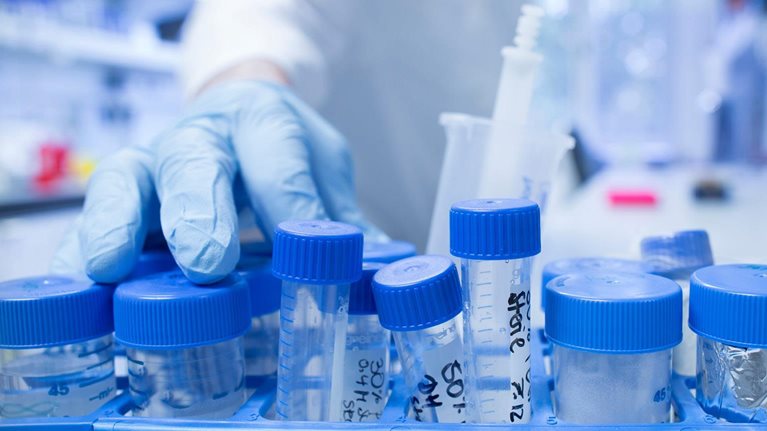Recent scientific breakthroughs in genome-editing technologies hold promise for the development of innovative therapies. CRISPR (clustered regularly interspaced short palindromic repeats) in particular has generated a lot of buzz. But how does the technology work, what effect will it have on healthcare in the short and long term, and what regulatory and other challenges need to be solved? To better understand recent developments, McKinsey’s Tom Ruby and Navjot Singh recently spoke with several industry executives: Nessan Bermingham:, CEO of Intellia Therapeutics; Katrine Bosley, CEO of Editas Medicine; and Samarth Kulkarni, chief business officer of CRISPR Therapeutics.
Stay current on your favorite topics
McKinsey: What is CRISPR/Cas9, and what does it enable you to do?
Nessan Bermingham: CRISPR/Cas 9 [CRISPR-associated protein 9] is a system that allows you to cut and edit DNA [see sidebar, “How CRISPR works”]. With CRISPR/Cas9, we can go into cells to modify DNA in a way that’s comparable to editing a document. Through this system, we have the potential to switch off the disease-causing mutated version of genes, delete fragments of DNA to treat conditions like Duchenne muscular dystrophy, and insert new genes to produce therapeutically relevant proteins. We can also repair mutated genes by converting them to the normal sequence, which is particularly relevant for rare diseases like cystic fibrosis.
Put very simply, the CRISPR/Cas9 technology is effectively a pair of microscissors that cuts DNA in a precise, directed manner. Once the DNA is cut, we’re guiding the body’s natural DNA-repair mechanism to edit the genome as desired.
Katrine Bosley: When I first heard about the technology in 2013, it sounded like science fiction or wishful thinking. But after spending time with scientists who regularly use it, I realized it is highly robust. It’s not a fragile technology that works only in certain settings. Researchers who tried it found their experiments worked the first time, which very rarely happens with a new technology.
So then you start thinking about what you can do with it and whether the time is right. We’ve reached a stage where we can combine our knowledge of the genome with gene-therapy technologies and nucleotide modalities to translate this cool but very young academic science into therapeutics. All the factors converged: great people, robust technology, and a maturing biotechnology landscape.
Today we’re working on exciting opportunities that could produce great therapies for patients in the near future, as well as building a platform to address a broader range of needs over a longer time horizon. The goal is medicines, not technology. As you solve the more technically tractable conditions such as monogenic blood-borne diseases, you get better at solving the longer-term diseases and further down the path to exploring broader possibilities.
McKinsey: How do you think CRISPR/Cas9 will be applied? What impact is it likely to have on healthcare?
Samarth Kulkarni: It can be applied in both drug discovery and therapeutic treatments. In drug discovery, CRISPR/Cas9 allows us to rapidly screen for the activity of different genes or functional domains of proteins. People are already using it to identify targets in oncology by taking a cancer cell and screening every gene in the genome to see whether it is involved in the cell’s ability to continue dividing.
When it comes to therapeutic applications, CRISPR/Cas9 has the potential to affect dozens of therapeutic areas and hundreds of diseases, both rare and common. It allows us to target the underlying cause of a disease and possibly cure it by modifying the patient’s genome. Some long-term applications are extremely exciting, such as regenerative medicine.

Biopharma Frontiers: What the future holds for the industry
In the near term, CRISPR is likely to be developed and approved for treating monogenic diseases. I’m excited about the potential for treating blood-based disorders like beta thalassemia, which is caused by a mutation in or near a single gene. The standard treatment today is regular blood transfusions, and the only cure is a bone-marrow transplant from a donor, which carries a significant risk of morbidity and mortality. CRISPR/Cas9 offers a safer and more effective treatment where the clinician takes stem cells from the patient, edits them to correct the defect, and then readministers them to the patient.
Beyond healthcare, there’s a plethora of applications. CRISPR/Cas9 can be used to eliminate pests, and microbes can be engineered to produce biofuels more efficiently. In agriculture, the technology can accelerate crop engineering by enabling us to modify genes in plant seeds more quickly and precisely. CRISPR/Cas9 can be used to make corn resistant to herbicide, for example, or to produce grapes that are freeze resistant so that they aren’t damaged by cold storage.
Nessan Bermingham: Looking ahead, CRISPR/Cas9 has the potential to drive truly personalized medicine. Medicine has not yet adapted to the genomics revolution that has taken place in the last two decades. What has been missing is a better tool to allow us to interrogate the genomic data and act on it to elicit a therapeutic effect. CRISPR/Cas9 is the first viable tool not only to enable us to explore and interrogate the genome but also to provide us with the drug to repair the genome in diseases where limited treatment options are available for patients today.
One can envision a time in the not-too-distant future when a patient presents with a genetic disease. Her genome is sequenced, and a genome-editing drug is custom made, targeting her specific mutation. The patient is subsequently treated and potentially cured, in a cost-effective manner. The CRISPR/Cas9 technology has the potential to drive a medical revolution in the near future.
McKinsey: What are the main challenges you face in developing CRISPR/Cas9 applications?
Samarth Kulkarni: In the near term, the main challenges we face in developing CRISPR-based therapeutics relate to delivery, safety, and pharmacology.
Delivery is challenging because you are introducing a complex set of components into an individual organ system. If it’s readily accessible, like the liver or the eye, delivery is relatively straightforward. For less accessible organs, developing a method to deliver the components exactly where you want them to go is more complicated. Fortunately, we are building on more than a decade of work done by companies developing RNA-based therapeutics.
Another challenge that’s often discussed is whether off-target effects—CRISPR activity in unintended parts of the genome—pose any risk to safety. But this is a fast-moving field, and we already have the means to overcome these effects by selecting RNA guides carefully where we can’t detect any off-target activity. It’s something we need to keep an eye on, but not a major roadblock. We can also use tools to switch off the CRISPR/Cas9 protein-cutting activity after a certain period of time.
In the long term, the challenges will shift to other areas such as the supply chain, clinical development, and commercialization. Supply-chain competency will be critical to success, and we’ll need to learn about it from lab services and other segments of healthcare. We’ll also face challenges in clinical development in some indications. Finding patients for ultra-orphan indications is particularly difficult, and specialized centers will play a critical role. In the long term, we’ll need to address pricing considerations to balance the curative potential of these treatments with the cost to healthcare systems.
Katrine Bosley: When thinking of challenges we face, it’s worth remembering we’re not starting from scratch. Despite all the excitement, this technology is actually building on a tremendous amount of precedent. It isn’t the first gene-editing technology to emerge; technologies based on zinc fingers and TALENs [transcription activator-like effector nucleases] have been around for a few years.
To address the challenge of delivering CRISPR/Cas9 to the right cells, we can take advantage of developments in gene therapy and other nucleotide-based work, including lipid-based nanoparticles and other delivery modes. A lot of interesting work is being done on engineering virus-based delivery particles with properties to help improve the targeting of a particular tissue.
Another challenge is the nature of the edit itself. Different mutations require different types of repair: turn a gene off, change the sequence, and so on. Some repairs are more technically challenging than others.
Immunogenicity is an interesting question because it depends partly on the delivery mode. Some type of virus-based delivery particle may be used only once because the patient will be primed to mount an immunological response against the particle after the first injection. If we use a lipid nanoparticle for delivery, on the other hand, we don’t know yet whether immunogenicity will be an issue.
Manufacturing will be challenging because the therapy is a complex mix of protein and RNA packaged in a delivery particle. But we’ve seen tremendous progress in the development of GMP [good manufacturing practice] capabilities for gene-therapy products. They are still very difficult to manufacture, but the technology is maturing. As it continues to do so, challenges like these will become secondary to biological and clinical questions like what genes you need to target and how you run clinical trials.
McKinsey: How do you see the regulatory environment developing to take account of these new technologies?
Katrine Bosley: As the FDA [US Food and Drug Administration] says, it doesn’t regulate technologies, it regulates products. I think it’s trying to remind people that it has new technologies coming to it all the time, and it’s very open to them. It’s very science driven, very data driven, and very engaged.
We need to remember this isn’t the first gene-editing technology to come along. The FDA has reviewed zinc-finger technology and allowed it to enter clinical trials. It’s technically different from CRISPR/Cas9, but like TALEN, it’s relevant to the regulation of gene editing in that all these technologies involve making a durable change to DNA.
The onus is on us to go to regulators with a thorough, rigorous, thoughtful package, plan, and data set. We would never play fast and loose with this issue; we take it very seriously. Some of the regulators have years of exposure not only to the technologies but also to the safety and ethical questions they pose.
Samarth Kulkarni: Agencies will need to get comfortable with more complex therapeutic products. They’ve shown themselves willing to work with new technologies and platforms provided that the necessary preclinical studies are performed and the drug or product is appropriately characterized.
Another factor to take into account is clinical-trial design. A lot of monogenic disorders have such a small patient population that randomized trials are impossible. But this isn’t uncharted territory; regulators will have to think about it disease by disease. Here again, we’ll probably benefit from earlier development efforts in gene therapy.
Nessan Bermingham: The regulatory bodies are thoughtful about new therapeutic approaches. We are aligned with the regulatory bodies globally to ensure this new approach brings forward the most safe and effective genome-editing therapies.
As we look ahead, the potential of this technology opens up some interesting areas of dialogue with the regulatory bodies as we think about implementing a truly personalized medicine approach. For example, cystic fibrosis (CF) can be caused by approximately 1,700 different mutations. CF patients can thus have very specific gene mutations that require a tailored type of edit. Given this, there is an opportunity to work with regulatory bodies to create highly patient-centric cures and to rethink the traditional paradigm of clinical-trial design, given these very patient-specific new treatments.
McKinsey: How do you approach the ethical questions about CRISPR? Should there be limits on how it is applied?
Nessan Bermingham: There are three key elements to think about in the ethical debate. The first is the democratization of this therapeutic approach. We need to ensure that all people around the world suffering from a genetic disease have the opportunity to access this technology. And ensuring that the application of this technology addresses today’s unmet medical needs should be our focus.
The second element is where you draw the line on what is and is not appropriate in how the technology is applied. It’s unhelpful to speculate about using it to make humans smarter, better looking, or more athletic, or about preparing people to go to Mars, as has been discussed in some media. We have to be clear about the most relevant medical applications within the continuum of applications, from disease-improving to lifestyle-enhancing or cosmetic applications.
Finally, the third element is the implications for germline modification. Our company has taken a clear stance: we do not do targeted germline modification. However, in time, society will face questions about the eradication of genetic diseases, similar to the decision to eradicate smallpox years ago. While a decision on this is still premature, given the ethical implications and the stage of the technology, and while society needs to answer some other important questions first, it will ultimately need to address this issue.
Katrine Bosley: I think it’s important to be engaged in the debate and to conduct ourselves constructively: being transparent about what we’re doing, publishing our data, and educating policy makers. These discussions are critical and go way beyond academic science and industry. They have got off to a good start, with an appreciation of the ethical considerations as well as the potential to develop treatments for really serious diseases. We need to strike the right balance between the two so that we don’t inadvertently impair the development of vital new medicines.
For more interviews on how the pharmaceutical industry is evolving and how leaders can adapt, see Biopharma Frontiers.


